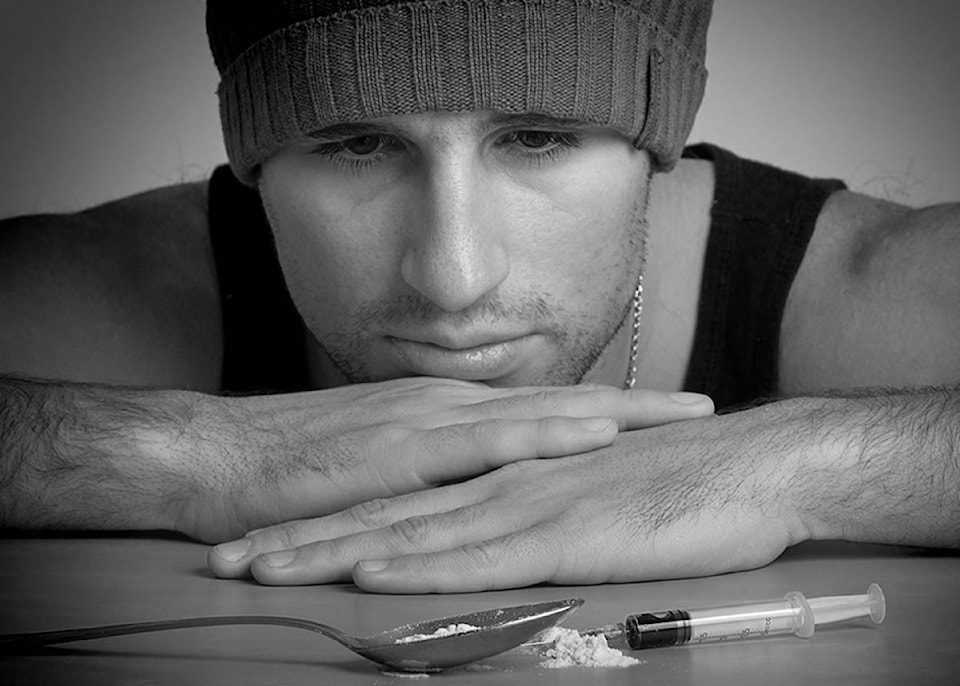This is the second instalment in a series looking at how local agencies are dealing with the opioid crisis.
Part 1 was published April 13.
***
Safer options for those using illicit substances in the Comox Valley are growing, as is the reality of overdosing and death from opioids.
A report from the BC Coroners Service released this year shows the largest increase of illicit drug deaths among B.C. regions was on Vancouver Island, with 155 opioid overdose deaths in 2016 - a 156 per cent increase from 2015.
Of those, 23 overdose deaths occurred on the North Island.
Recently, the Courtenay office of AIDS Vancouver Island became the first recognized safe injection site in the Comox Valley.
AIDS Vancouver Island works in conjunction with a number of service providers, one of which is the Care-A-Van, the mobile outreach health unit from the Comox Bay Care Society.
They are considered a secondary distributor, and help in suppling kits for safer drug use.
Nurse Sabina Acheson, the co-ordinator of the Care-A-Van, says the society acknowledges people in the Valley are using illicit substances, and one of their roles is to provide other options for individuals and to promote individual harm reduction strategies.
“We want to bring services and allow people to access them where they live … harm reduction is one of 10 programs that we offer. We don’t work under the assumption that people have the same medical and social needs; everyone has the right to have their needs acknowledged.”
The object of the Care-A-Van is to provide no fee health care and social development services directly to clients on the streets of the Comox Valley.
Their mobile unit operates three days a week, and has serviced 1,388 people since 2009. That number has increased significantly last year - in 2016, 336 new individuals received service on the van.
They operate with the assistance of 50 volunteers - nurses, doctors, pharmacists, dentists, a legal advocate and more.
The Care-A-Van travels to various sites around the area which are most helpful to reach those who need it most. One of the locations the unit visits is outside the BC Housing-owned Washington Inn apartments located on Ryan Road.
Harm reduction kits are given out there if required and in other locations the unit travels, and Acheson explains building relationships and giving clean supplies and access to services is part of their harm reduction approach.
“People can make informed decisions about what’s best for their health - we offer teaching points but we’re not driving an agenda. We’re saying: ‘yes, we know you do drugs, but it’s not my place to judge.’”
The supplies also help in decreasing the costs to the health care system, she adds, by helping reduce blood-born illnesses, treating wounds and more.
Some residents of the Washington Inn have stepped forward to The Record with their concerns of finding used needles around the building - a problem they say has increased in the past months.
Acheson notes the Care-A-Van offers the services to return used needles in a safe manner, and encourages organizations, buildings and businesses to install sharps containers for safe disposal of used injections.
While the initiative might seem surprising to some, she acknowledges, the idea falls in line with other public health initiatives, especially those in public institutions.
“There was a period of time where there were no sanitary supplies for girls in schools or condoms in the washrooms.”
She says BC Housing supports the society’s services with their clients and their principal of bringing access to services where they live. They also follow the core principals of harm reduction from the BC Centre for Disease Control, she adds.
The Care-A-Van now carries naloxone kits onboard and she says the unit is another agency that’s mobile and can interact with people.
“We’re providing a point of care for those where access is sometimes not available.”
For more information on the Care-A-Van visit cvcareavan.ca or visit their Facebook page by searching Comox Bay Care Society.
***
In Part 3, agencies say the public is accepting these harm reduction platforms, but what do residents really think? We talk to local business owners and the public at large.
